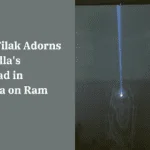On Wednesday night, southwestern Japan experienced the effects of a significant earthquake measuring 6.3 on the Richter scale, as confirmed by the US Geological Survey (USGS). Despite the substantial magnitude of the quake, the good news emerged as no tsunami warnings were issued, and fortunately, there have been no reports of any damage resulting from the seismic event.
The USGS pinpointed the epicenter of the earthquake within a channel situated between the islands of Kyushu and Shikoku. This location was approximately 18 kilometers (about 11 miles) to the west of Uwajima. Further analysis revealed that the earthquake’s focal depth extended to approximately 25 kilometers beneath the Earth’s surface.
Japan Earthquake
On Wednesday, Japan experienced the impact of a significant earthquake measuring 6.3 on the Richter scale. The seismic event originated in the oceanic area situated between the Kyushu and Shikoku islands, specifically about 18 kilometers to the west of Uwajima.
According to data provided by the US Geological Survey, the earthquake’s focal point was estimated to be approximately 25 kilometers below the Earth’s surface.
Despite the considerable magnitude of the quake, there were no immediate warnings issued for a potential tsunami. This suggests that the seismic activity did not generate large-scale oceanic disturbances that could lead to destructive tidal waves. Additionally, as of the latest reports, there have been no indications of significant damage resulting from the earthquake.
Also Read: New York Earthquake
Japan Earthquake Impact on Nuclear Plant
The organization responsible for overseeing the operations of the Ikata nuclear plant located in Ehime prefecture has confirmed that the plant is currently running with one reactor in operation. Despite concerns, there have been no reported irregularities or abnormalities in its functioning. This assurance comes from reports provided by NHK, a reputable public broadcaster known for its reliable information dissemination.
Earthquakes in Japan
Japan, positioned along the Pacific Ring of Fire, encounters a high frequency of earthquakes due to its location atop several active tectonic plate boundaries. Approximately one-fifth of all earthquakes worldwide, measuring a magnitude of 6 or higher, occur within Japan’s seismic zone.
One of Japan’s most devastating disasters unfolded on March 11, 2011, when a colossal magnitude 9 earthquake struck the northeastern coast of the country. This seismic event unleashed a massive tsunami that ravaged coastal communities, causing widespread destruction and loss of life.
The aftermath of the earthquake and tsunami triggered a cascading series of crises, including the Fukushima Daiichi nuclear disaster. The Fukushima Daiichi nuclear power plant, situated near the epicenter of the earthquake, suffered severe damage, leading to multiple reactor meltdowns and the release of radioactive materials into the environment.
The ensuing nuclear emergency at Fukushima was declared the worst since the Chernobyl disaster of 1986, marking a significant milestone in Japan’s history of nuclear power and disaster management. The aftermath of these events continues to have profound effects on Japan’s society, economy, and environmental policies.
Also Read: Japan Earthquake: Magnitude 6.0 Earthquake Rattles Japan’s Coast
Japan Earthquake FAQs
Q.1. What was the magnitude of the recent earthquake in southwestern Japan?
Ans. The recent earthquake in southwestern Japan measured 6.3 on the Richter scale, according to the US Geological Survey (USGS).
Q.2. Where was the epicenter of the earthquake located?
Ans. The epicenter of the earthquake was pinpointed by the USGS within a channel between the Kyushu and Shikoku islands, approximately 18 kilometers west of Uwajima.
Q.3. Were there any tsunami warnings issued after the earthquake?
Ans. No tsunami warnings were issued following the earthquake, indicating that there were no significant oceanic disturbances generated by the seismic activity.
Q.4. Is there any damage reported from the seismic event?
Ans. Fortunately, there have been no reports of any damage resulting from the earthquake as of the latest updates.
Q.5. What is the current status of the Ikata nuclear plant following the earthquake?
Ans. The Ikata nuclear plant, located in Ehime prefecture, is currently operating with one reactor in operation. According to reports from NHK, there have been no reported irregularities or abnormalities in its functioning following the earthquake.







